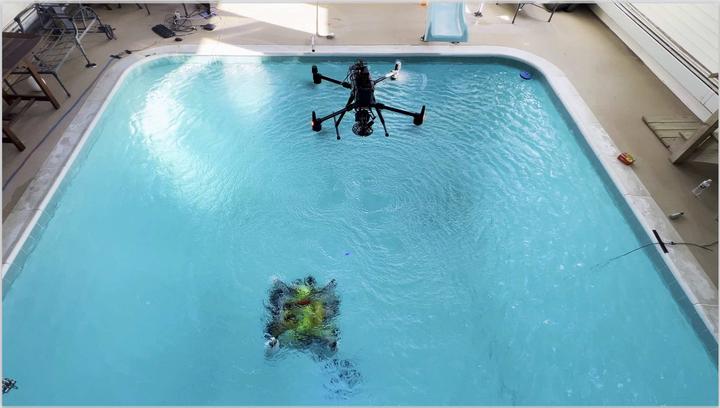
Abstract
Locating underwater robots is fundamental for enabling important underwater applications. The current mainstream method requires a physical infrastructure with relays on the water surface, which is largely ad-hoc, introduces a significant logistical overhead, and entails limited scalability. Our work, Sunflower, presents the first demonstration of wireless, 3D localization across the air-water interface – eliminating the need for additional infrastructure on the water surface. Specifically, we propose a laser-based sensing system to enable aerial drones to directly locate underwater robots. The Sunflower system consists of a queen and a worker component on a drone and each tracked underwater robot, respectively. To achieve robust sensing, key system elements include (1) a pinhole- based sensing mechanism to address the sensing skew at air-water boundary and determine the incident angle on the worker, (2) a novel optical-fiber sensing ring to sense weak retroreflected light, (3) a laser-optimized backscatter communication design that exploits laser polarization to maximize retroreflected energy, and (4) the necessary models and algorithms for underwater sensing. Real- world experiments demonstrate that our Sunflower system achieves average localization error of 9.7 cm with ranges up to 3.8 m and is robust against ambient light interference and wave conditions.